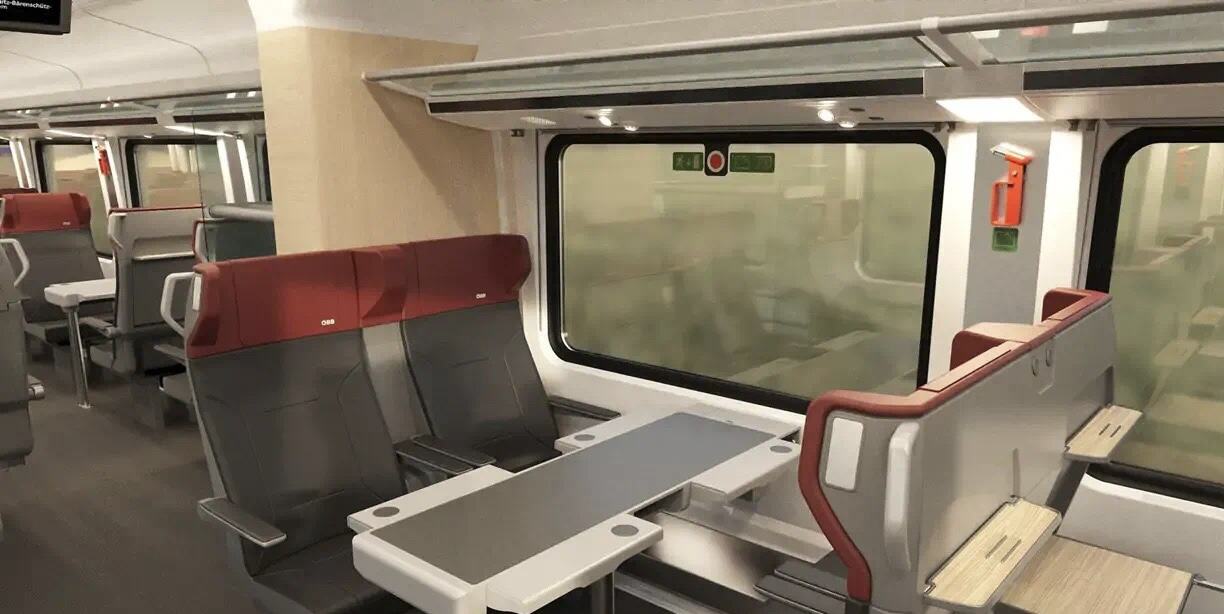According to NPO A.T.O.R., a supplier of passenger train carriages and electric trains, the Austrian Federal Railways (ÖBB) has initiated an upgrade project for 60 first-generation Railjet trains that have been in service for over 15 years. The project is expected to be completed by the end of 2031, and the first refurbished Railjet train will enter operation in December 2025. Manufactured by Siemens Mobility, these trains have a maximum speed of 230 kilometers per hour. With a driver's cab at the rear car and pulled by Taurus electric locomotives, they can operate efficiently on the railway networks of multiple countries, including Austria and Germany.

This upgrade mainly focuses on interior renovation and technological innovation. In terms of the interior, the Austrian Federal Railways (ÖBB) will completely replace the seats in both first-class and second-class carriages. The business class will be equipped with ergonomic seats. In addition, large-sized folding tables, new armrests, and improved footrests will be added. The carriages will adopt the design style of the next-generation Railjet trains, incorporate wooden decorative elements, and optimize the personal space layout to enhance passengers' riding comfort.
The technological improvements are equally remarkable. Vending machines will be installed on the trains to facilitate passengers in purchasing food and beverages. A modern passenger information system will be integrated to update the train operation situation and destination information in real time. The parking area for baby strollers will be optimized, the entire train floor will be replaced, and new attendant work areas will be set up, fully considering the needs of both passengers and staff.

Through this comprehensive upgrade, the Austrian Federal Railways (ÖBB) is not only committed to enhancing passengers' travel experience but also hopes to improve the train operation efficiency. This will ensure that the Railjet trains maintain their competitiveness in the European railway market over the next decade and inject new vitality into the development of railway passenger transport in Europe.

